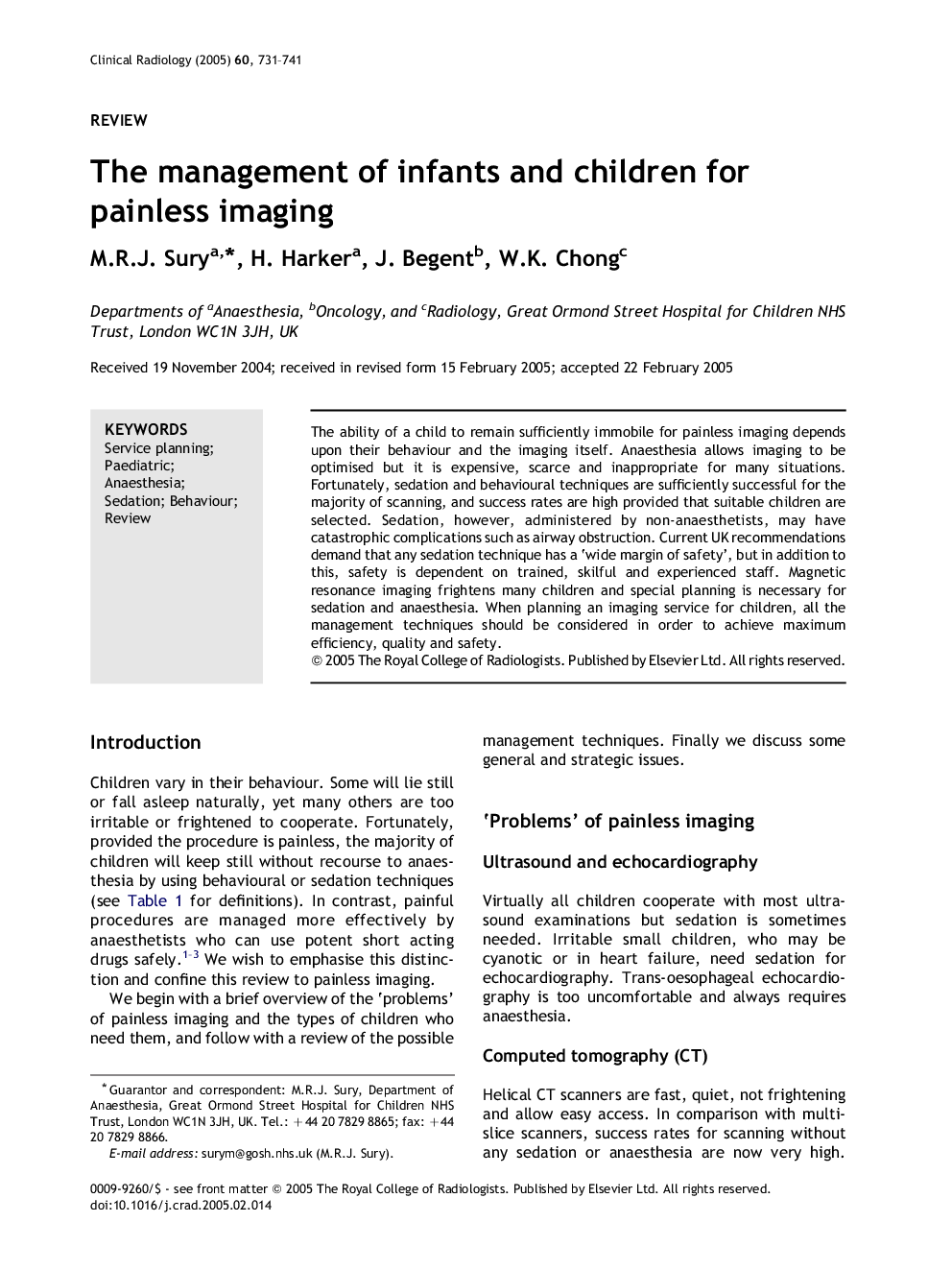| Article ID | Journal | Published Year | Pages | File Type |
|---|---|---|---|---|
| 9337729 | Clinical Radiology | 2005 | 11 Pages |
Abstract
The ability of a child to remain sufficiently immobile for painless imaging depends upon their behaviour and the imaging itself. Anaesthesia allows imaging to be optimised but it is expensive, scarce and inappropriate for many situations. Fortunately, sedation and behavioural techniques are sufficiently successful for the majority of scanning, and success rates are high provided that suitable children are selected. Sedation, however, administered by non-anaesthetists, may have catastrophic complications such as airway obstruction. Current UK recommendations demand that any sedation technique has a 'wide margin of safety', but in addition to this, safety is dependent on trained, skilful and experienced staff. Magnetic resonance imaging frightens many children and special planning is necessary for sedation and anaesthesia. When planning an imaging service for children, all the management techniques should be considered in order to achieve maximum efficiency, quality and safety.
Related Topics
Health Sciences
Medicine and Dentistry
Oncology
Authors
M.R.J. Sury, H. Harker, J. Begent, W.K. Chong,
